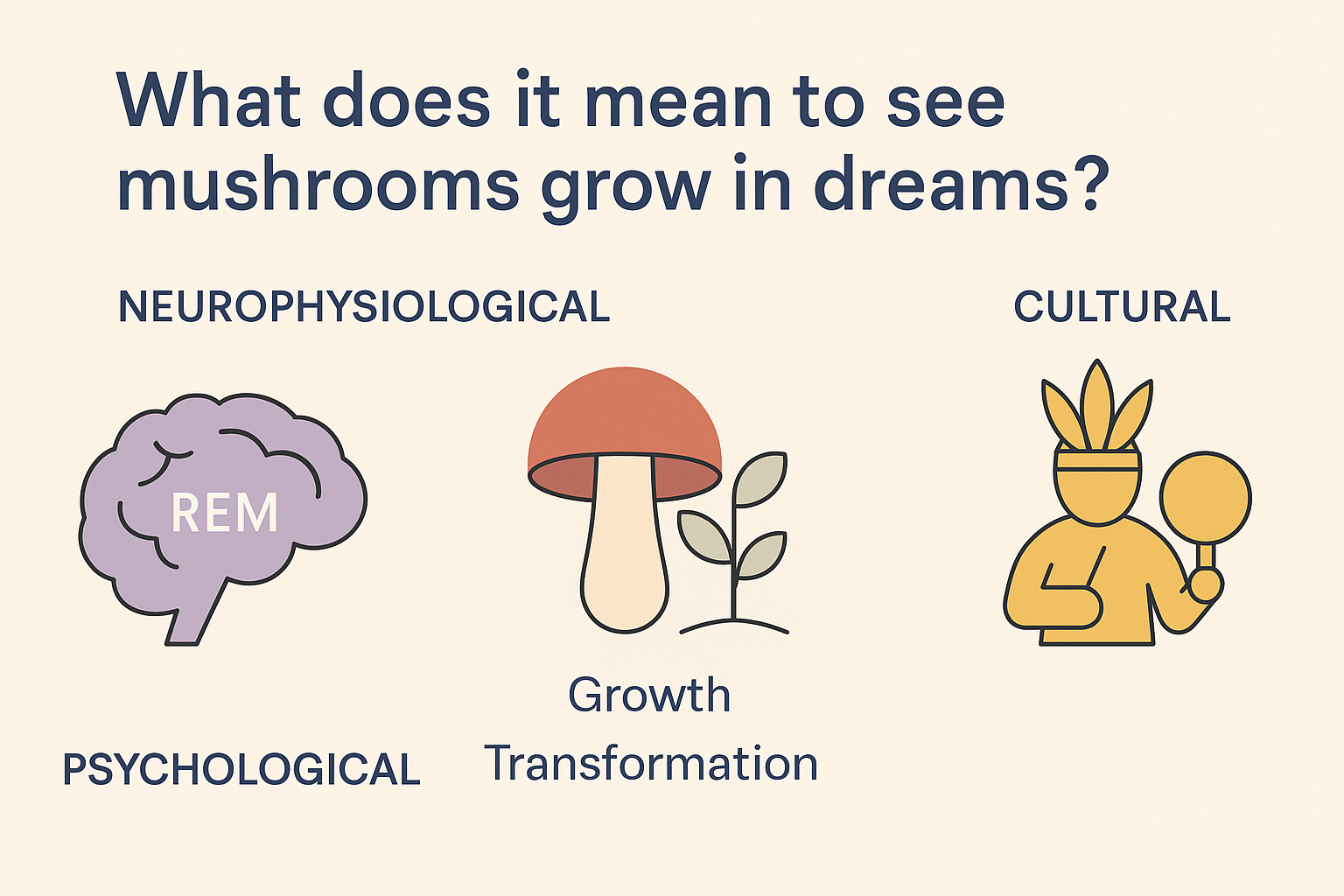Mushroom Dreams: Understanding the Neurophysiological and Symbolic Meaning

Neurophysiological Basis of Dream Imagery
REM Sleep and Dream Vividness
Rapid Eye Movement (REM) sleep is marked by intense brain activity resembling wakefulness, which fuels the lifelike quality of our dreams. Brain imaging studies show that regions responsible for visual processing and emotional memory—like the occipital and limbic areas—light up during REM, enabling complex imagery such as growing mushrooms to surface.
Psychedelic Parallels
Interestingly, psychedelic compounds like psilocybin elicit brainwave patterns that mirror REM sleep, suggesting shared neural pathways for dream and hallucinatory experiences. This overlap underlines why dream researchers sometimes frame dreams as "prototypical hallucinations," where the brain recombines memories and emotions into vivid scenes.
Mushrooms as Symbols in Dreams
Growth and Transformation
Mushrooms sprouting in dreams often symbolize personal development or the emergence of latent aspects of the self. Their rapid, almost magical appearance from decay highlights themes of renewal and transformation.
Subconscious Messages
When mushrooms grow on or within the dreamer's body, some interpretations link this to emotional or physical distress that remains unaddressed. The fungus imagery may signal anxieties or "negative emotions expanding" beneath the surface.
Prosperity and Resilience
Because mushrooms can thrive in harsh conditions, they also serve as symbols of resilience, fertility, and prosperity. Dream guides often advise staying receptive to new opportunities, much like mushrooms seizing the first post-rain sunlight.
Cultural and Anthropological Context
Shamanic Traditions
In Siberian shamanism, practitioners consumed Amanita muscaria to access altered consciousness and spirit realms—an ancient parallel to dreaming that underscores mushrooms' link to mystical transformation.
Mesoamerican Mythology
Aztec lore celebrated Xochipilli, the mushroom-god of flowers and dreams, highlighting mushrooms' role as bridges between the human and divine. Such myths reflect a longstanding view of mushrooms as conduits for spiritual insight.
Psychological Interpretations
Memory Consolidation
According to Oneirology—the science of dreaming—REM sleep aids in integrating new experiences with existing memories and modulating emotions. Seeing mushrooms emerge in dreams can therefore mirror this process, symbolizing the subconscious sorting and "digesting" of personal material.
Activation-Synthesis Theory
The activation-synthesis model posits that dreams are the brain's attempt to make sense of random neural firings. Under this lens, mushrooms may simply be striking visual patterns your mind weaves together into a narrative of growth or hidden fear.
Archetypal Perspectives
Swiss psychiatrist C. G. Jung considered mushrooms archetypal symbols of the "shadow" and the interplay between creation and destruction. Their dual nature—edible or poisonous—mirrors the psyche's capacity for both growth and self-sabotage.
Conclusion
Dreams of mushrooms weave together biological processes of REM sleep, psychological mechanisms of memory and emotion, and millennia-old cultural narratives of renewal and mystery. Whether they emerge as symbols of personal growth, warnings of unexpressed distress, or invitations to spiritual exploration, these fungi in our dreams invite us to examine the hidden textures of our inner world—and perhaps nurture new insights into life's cycles of decay and rebirth.